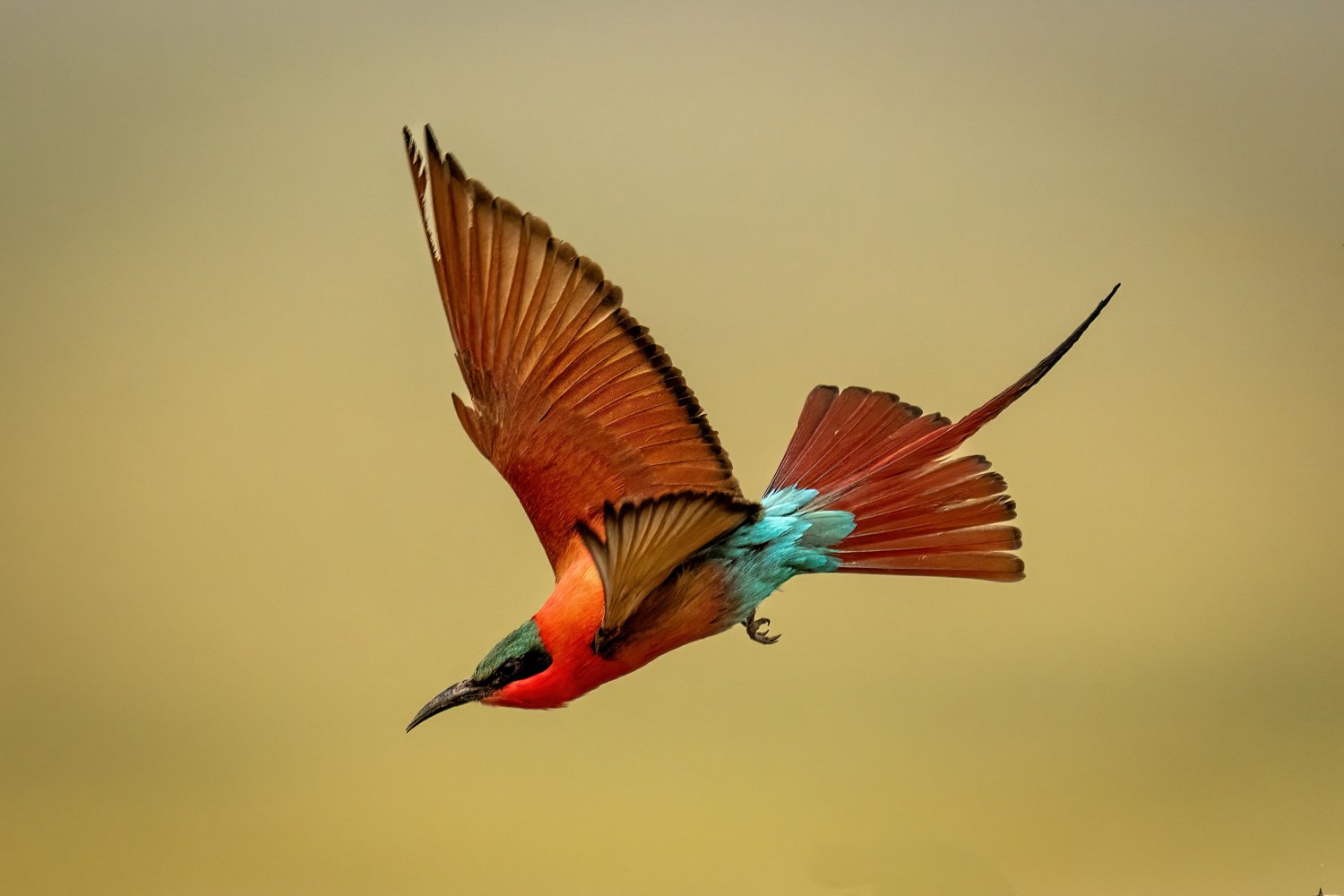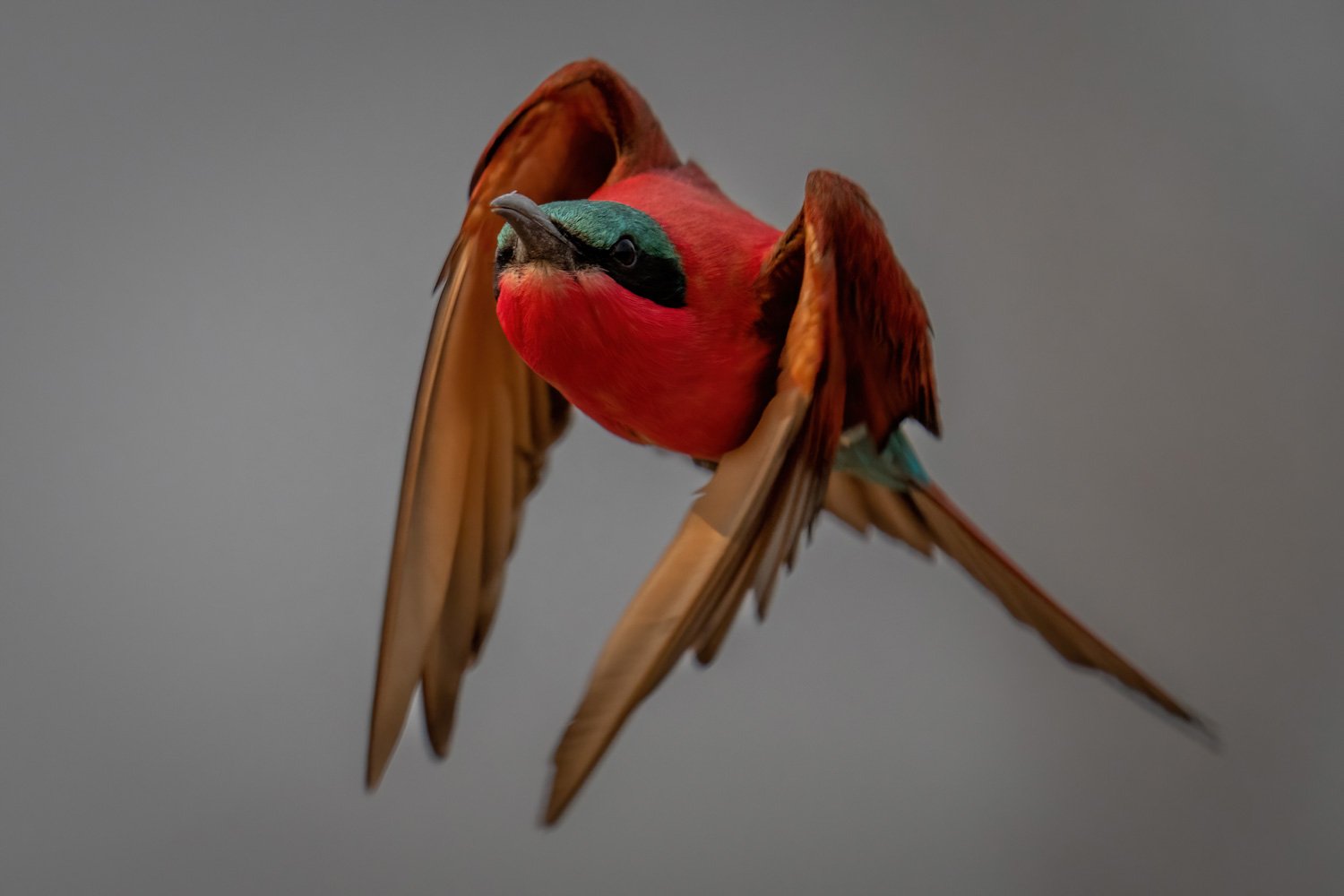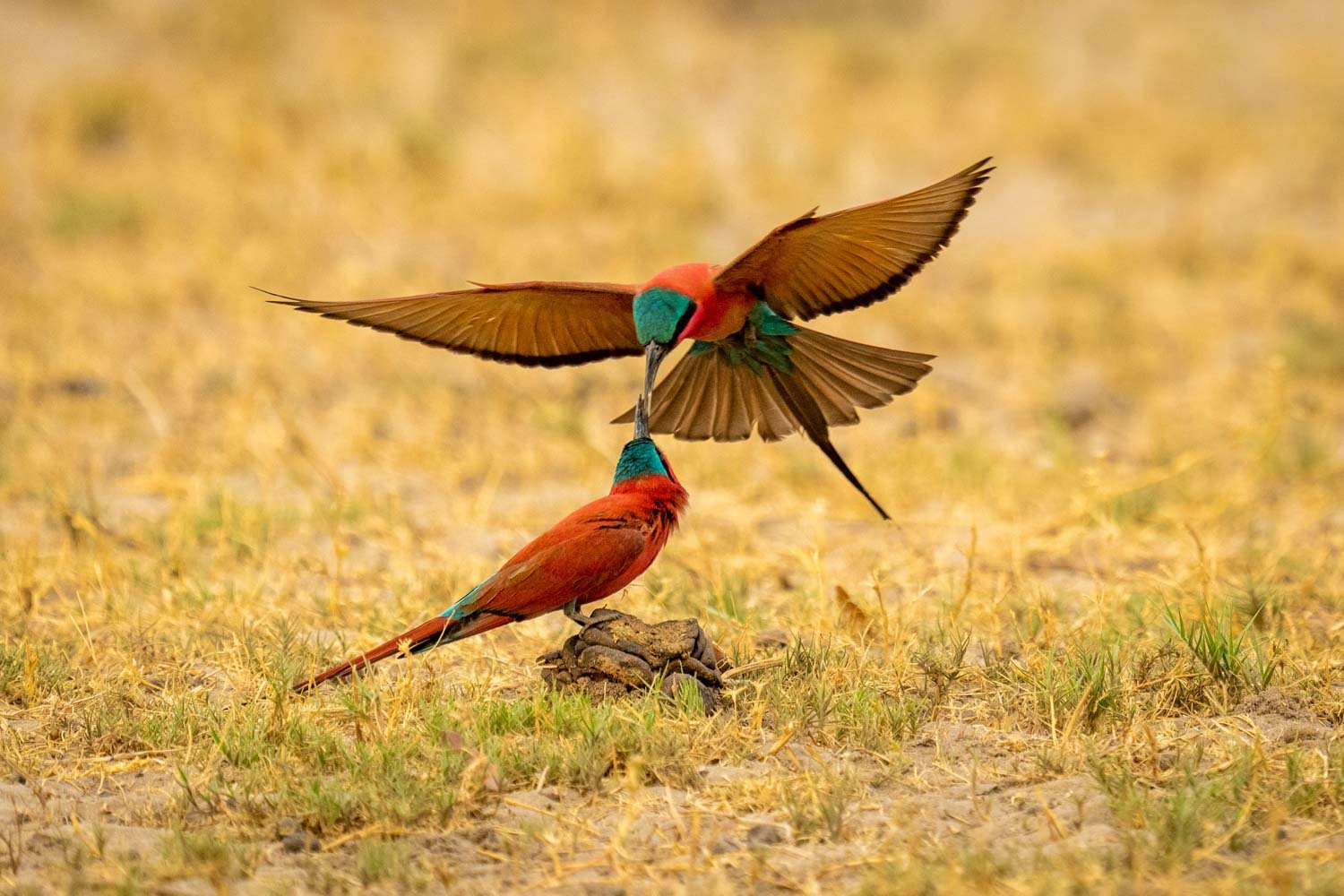Muchenje...again!
The wrong kind of bee-eaters…!
Elephants, leopards, wild dogs, roan and sable antelopes, lions attacking a baby elephant, boat rides, lovely people, another beef Wellington, but problems with my camera and not as many bee-eaters as I’d hoped. That was the story of my second trip to Muchenje Safari Lodge in Botswana—this time in the dry season.
Getting There
I wouldn’t go as far as to say I actually enjoyed the journey from London via Joburg and Kasane, but it was the first time I didn’t have to worry about Covid restrictions for more than two years. No masks required (either at the airport or on the plane), no PCR or lateral flow tests and no proof of vaccination. Phew! What a relief!
And it only took me 21 hours door-to-door…
Daily Life
The routine was pretty much the same as when I came in May. You can read all about it in my previous blog post, but I basically tried to make sure that I went out as often as I could on game drives and boat rides along the Chobe river. Toff and Kiddy tried to make sure I went out on my own with one of the junior guides, first Tips, then GB, then Philly. The idea was that I could take my time, and the guests wouldn’t have to put up with me waiting for an eagle to fly off a branch for 20 minutes! In practice, I ended up joining the guests for quite a few of their game drives, especially in the first week, and we always went on the boat rides together.
The rest of the time, I was usually hunched over my laptop editing my pictures. However, I felt a bit guilty about being so busy last time around, so I tried to make more time to socialise with Toff and Kiddy and any guests who were in the bar.
The managers and staff hadn’t really changed apart from one or two arrivals and departures, and they were as friendly and helpful as ever. We also had some really good groups of guests, and I enjoyed chatting with them, sharing my pictures with them and enjoying a few sundowners with them on our game drives.
“Arrive as friends and leave as family” was the original Muchenje motto. I remember a lovely moment on one particular game drive just listening to the guests happily chatting away. The two couples had never met before, but after just a few days, it was like they’d known one another for 20 years…!
The only interruption to the routine was a party held at the lodge to celebrate the 25th anniversary (delayed by a year due to Covid). It lasted from mid-morning until mid-afternoon. The owners flew out to meet with a few local dignitaries, including the Paramount Chief of the Vekuhane Nation, Kgosi Muniteenge Lawrence Liswaani Sinvula III.
(Just click or tap on any of the images in this article to view them full screen.)
The Paramount Chief unveiling a plaque
It was the first time I’d met a Paramount Chief, so I had to be told to bow and clap at certain points in the ceremony. I was also the official photographer, so I was pretty busy…!
They’d put up a marquee in the garden, and there were about 30 or 40 guests trying to cope with the heat. Toff, Shaun, the Paramount Chief and one or two other Important People gave speeches while I snapped away, trying to be as discreet as possible…!
There was also some singing and dancing from a choir, some kids from the local school and the local staff. However, it didn’t go on too long, and I still managed to go out on game drives in the morning and in the afternoon.
Wildlife
It was the first time I’d been to Botswana in the dry season, and it was different to say the least. The trees, the grass and the ground were all bone dry, and the floodplain looked just like the Serengeti! It’s just a shame there weren’t any cheetahs…!
The dry season from June to October is traditionally ‘peak season’. In theory, that’s because the waterholes in the woods dry up, so all the animals have to come down to the river to drink, leading to more sightings. In fact, it doesn’t really matter when you visit Botswana. You’ll always get good wildlife viewing opportunities. Travel agents just try to charge a premium to guests going away during the summer holidays!
On this trip, I saw fewer birds but more animals. I kept my usual species list, and I ended up with a total of 33 animals and 94 birds. That compares with 25 and 104 last time.
Predators
I was lucky enough to see both leopards and wild dogs in the first few days I was there. I hadn’t seen either on my previous trip, so it was nice to get that out of the way early on. In the end, I only saw wild dogs twice, and it was too dark to get any decent shots. However, I saw 17 leopards in 12 separate sightings!
They almost all arrived in the Serondela area in the eastern part of the Chobe riverfront. That was where we usually went on a game drive after our boat rides, but we also took a packed breakfast on a couple of mornings so that we had time to drive all the way there and back. It was about a 90-minute journey, so it wasn’t the easiest place to get to. I ended up falling asleep in the front seat most of the time…!
My favourite sighting was when we came across a leopard lying on the thick trunk of a tree, right in front of an open area where we could park and take pictures. I also had another sighting when I was driving back from Serondela with GB.
“Do you see the jackals?” he asked. “Ah, I think it might be two leopards.”
“Yes, that’s right. It’s bound to be two leopards,” I said in amusement. The chances of seeing two leopards just strolling along the waterfront towards us was just too hard to believe—but that’s exactly what happened! It was a mother and her cub, and I was able to take a whole series of pictures of them both. I even managed a slow pan of the mother at 1/15 of a second!
Anyway, I know you all want to see my leopard shots, so here they are…
I also had 23 sightings, which was a lot more than last time. I saw them down by the river, both in the morning and in the evening, and we even saw a couple of cubs. Sadly, one of them was taken by a leopard and ended up hanging from the branch of a tree…!
That’s the circle of life for you.
The most dramatic sighting came when I was on a boat ride. We were quite a long way away, but I could see a pride of lions facing off with an elephant and her calf. The mother was trying to chase the lions away by charging towards them and trumpeting at the top of her voice, but the lions kept watching and waiting for their opportunity.
In the end, one of the lions managed to sneak round behind the mother and take down the baby elephant. It had its jaws around its neck, and it looked as though it would be a goner. However, the mother charged back and chased the lion away. What drama!
The strangest part came when the mother stopped to give herself a dust bath! It was as if she was calling for a time-out from the lion: “Just give me a moment while I look after my skin, and then you can go back to trying to kill my baby!”
That was the closest I came to a kill during my trip. It was very exciting for a while, but then it just petered out as the lions lost interest and the elephants walked away…
However, we were lucky enough to see several prides of lions feeding on kills. First of all, there was a baby Cape buffalo, and then we came across a dead southern giraffe in a muddy waterhole. It wasn’t clear if it was a kill or if it had just died of disease or old age, but that didn’t stop lions, black-backed jackals, white-backed vultures and marabou storks from taking turns to feast on the remains.
Tug of War
Prey
Of course, going to Botswana is not all about the predators. Most people go there to see the elephants. It has the highest population in the world, with 60-70,000 elephants in Chobe National Park and 120,000 in the country as a whole.
I saw my fair share of elephants, and the herds were much bigger than in May. On one boat ride, I saw a herd of around 100, and then we came across another twice that size!
Elephants aren’t my favourite animal, but I love watching them give themselves dust baths and mud baths. They do it to protect their skin from insects and avoid sunburn (really!), and you get a ringside seat when you go on a boat ride along the Chobe river.
As well as elephants, I saw bachelor groups and harems of impala (obvs!), herds of Cape buffalo, troops of chacma baboons and a few warthogs and plains zebras.
My favourite shot was a backlit study of a lone baboon sitting on a termite mound. Fade to black…
The Rock
Birds
After a few game drives, my initial reaction was to be disappointed by the lack of bee-eaters. I hardly saw a single little bee-eater in the first week, and the southern carmine bee-eaters I was looking forward to seeing had abandoned their usual nesting site. Too bad.
Needing a different challenge, I decided to focus on taking shots of birds in flight. It wasn’t easy, and I had to plumb new depths of patience while waiting for rollers, bee-eaters and African fish eagles to fly away. However, I did manage a few decent shots.
Not even my Sony Alpha 1’s autofocus system could keep the little bee-eaters in focus when they darted off the branch, so I probably should’ve used f/8 rather than shooting wide open. However, I did benefit from the experience of being in Botswana in May, when I spent hours photographing them.
The key lesson was to keep taking continuous bursts of 4-5 frames every second or so. It’s impossible to react fast enough to press the shutter in time to catch a bee-eater taking off, so you just need to keep on buying tickets to the photographic lottery and hope you’re a winner!
Here are my favourite shots of bee-eaters and other birds in flight. I’ll let you be the judge…
Photography
From a photographic point of view, I think the trip was a success, but I was slightly disappointed I didn’t get more ‘great’ shots. I rate all my wildlife images on a five-star scale, and I only gave full marks to seven. Of those, only two were good enough to enter in competitions—the little bee-eater at the top of this article and the baboon on the termite mound.
Having said that, I was very impressed with the general level of sharpness in my images. The Sony Alpha 1 is a great camera, and the combination of sensor resolution, frame rate, buffer size and eye-detect autofocus is unbeatable when it comes to wildlife photography.
I learnt a lesson last time, when I was using my 1.4x and 2.0x teleconverters almost every day. That slowed down my focus acquisition speed and resulted in some very soft images. This time around, I only used the 1.4x teleconverter a couple of times with my 600mm lens.
I also took my 400mm f/2.8 lens with me this time. That’s the first time I’ve ever dared to take it on a plane. I’d always been too worried it would break the rules on how much hand luggage I was allowed. However, I spoke to wildlife photographer Andy Skillen about it a few months ago, and he assured me it was fine—he does something similar all the time.
Needless to say, there was no problem at all getting the lens through security, and I was very grateful to have it with me. Having such a fast lens gets you out of a lot of jams at sunset and sunrise when the light is low, and it obviously helps to cut down the depth of field when the background is a little bit messy.
The only real problems I had with my equipment came from the bumpy roads. There’s a track down to the river from the Ngoma Gate into Chobe National Park, and the guides call it the ‘massage road’. It’s pretty bad, but they can’t do anything about it.
When I was on one particular game drive, I was sitting in the front seat of the Land-Rover with both my cameras resting on the seat between my legs. We must’ve gone over a very big bump because one of the cameras was jolted off the seat and fell on the metal bar underneath. Unfortunately, that cracked the LCD and ripped off the rubber eyecup.
I didn’t notice it immediately, so I lost the eyecup, but the damage to the LCD wasn’t too bad, and I could still see the whole image during playback. The eyecup only cost 20 quid to replace, and I took the camera to Fixation in Vauxhall for the LCD repair. It’s going to cost £281.69, which is lower than the excess on my insurance, so I’m just going to have to swallow it…
Verdict
All in all, it was great to go back to Muchenje Safari Lodge. The people were wonderful, and it gave me a fantastic chance to fill out my portfolio—I don’t think I’ve ever taken so many pictures of birds in flight!
It was lovely to see Shaun and the other owners while they were out there, and I hope we can work something out for next year. Thanks again, guys.
If you’ve enjoyed this post, please click the ‘Share’ button below.
If you’d like to order greetings cards or a framed print of one of my photographs, please visit the Prints page.
If you’d like to book a lesson or order an online photography course, please visit my Lessons page.
Species List
Animals (33)
African bush elephant
African civet
African rock python
African wild dog
Banded mongoose
Black-backed jackal
Blue wildebeest
Bushbuck
Cape buffalo
Chance baboon
Common impala
Common warthog
Common waterbuck
Frog
Greater kudu
Hippo
Honey badger
Leopard
Lion
Plains zebra
Puku
Red lechwe
Roan antelope
Sable antelope
Side-striped jackal
Slender mongoose
Southern giraffe
Spotted bush snake
Spotted hyena
Steenbok
Tree squirrel
Tsessebe
Vervet monkey
Birds (95)
African darter
African harrier-hawk
African jacana
African skimmer
African spoonbill
African stonechat
African wood owl
Arrow-marked babbler
Bateleur
Black egret
Black heron
Black-collared barbet
Black-winged pratincole
Black-winged stilt
Blacksmith plover
Blue waxbill
Brown snake-eagle
Brown-hooded kingfisher
Cattle egret
Collared pratincole
Common sandpiper
Common waxbill
Coppery-tailed coucal
Crested francolin
Crowned plover
Donaldson-Smith’s sparrow-weaver
Egyptian goose
Emerald-spotted wood-dove
Fork-tailed drongo
Giant kingfisher
Glossy ibis
Goliath heron
Grassland pipit
Great egret
Great white pelican
Greater blue-eared starling
Green wood-hoopoe
Grey go-away bird
Grey heron
Hamerkop
Helmeted guineafowl
Hooded vulture
Intermediate egret
Knob-billed duck
Kori bustard
Lappet-faced vulture
Lilac-breasted roller
Little bee-eater
Little egret
Long-toed plover
Malachite kingfisher
Marabou stork
Namaqua dove
Open-billed stork
Pied kingfisher
Pied wagtail
Purple heron
Racket-tailed roller
Red-billed hornbill
Red-billed oxpecker
Red-billed quelea
Red-billed spurfowl
Red-billed teal
Red-headed weaver
Reed cormorant
Ring-necked dove
Sacred ibis
Saddle-billed stork
Small button quail
Sooty chat
Southern carmine bee-eater
Southern yellow-billed hornbilled
Spotted thick-knee
Spur-winged goose
Squacco heron
Stonechat
Swainson’s francolin
Swallow-tailed bee-eater
Swamp bulbul
Tawny eagle
Water monitor
Water thick-knee
Western banded snake-eagle
Whiskered tern
White-backed vulture
White-browed coucal
White-crowned lapwing
White-faced whistling-duck
White-fronted bee-eater
Wire-tailed swallow
Woodland kingfisher
Yellow-bellied greenbul
Yellow-billed kite
Yellow-billed oxpecker
Yellow-billed stork
If you’d like to order a framed print of one of my wildlife photographs, please visit the Prints page.
If you’d like to book a lesson or order an online photography course, please visit my Lessons and Courses pages.

















































